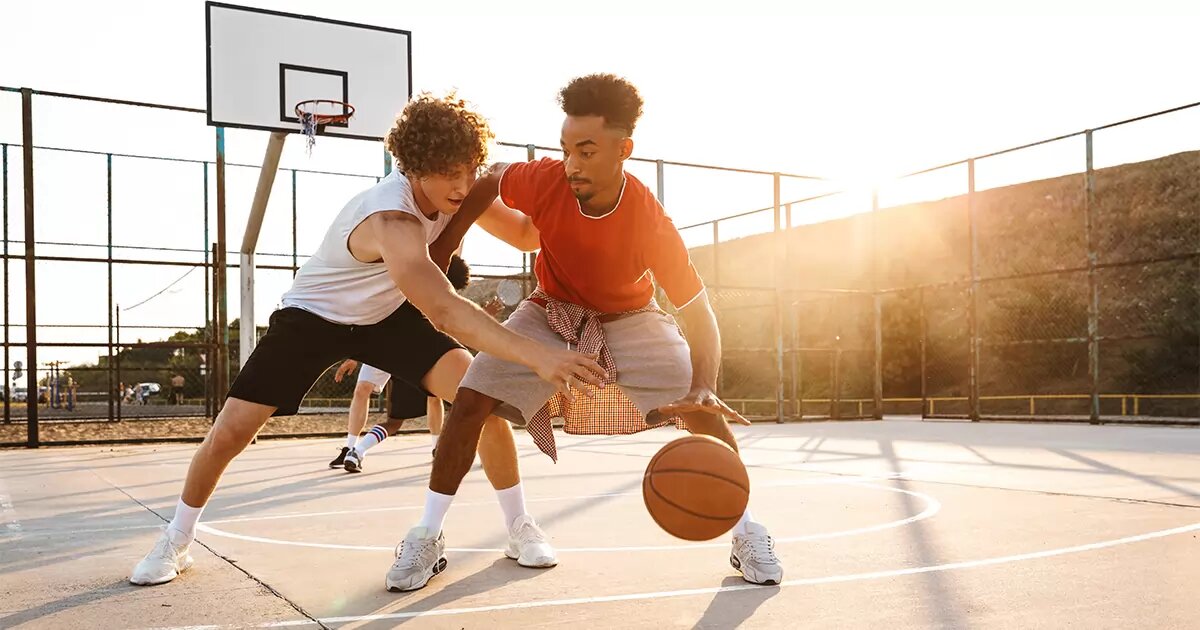Table of Contents
ToggleBasketball, a sport loved by millions around the world, is not only a game of skill and competition but also an opportunity for personal growth. However, like any physical activity, it comes with its fair share of risks – basketball injuries being one of them. Don’t let common injuries shatter your hoop dreams! In this blog post, we’ll explore preventative moves that can help you stay on top of your game and avoid those pesky sprains, strains, and fractures. So lace up your sneakers and get ready to slam-dunk into a world where injury prevention becomes second nature on the basketball court!
Introduction
In order to avoid common basketball injuries, there are a few preventative moves that you can make. First, always warm up before playing. This will help loosen your muscles and reduce your risk of injury. Second, wear the proper gear. This includes comfortable, supportive shoes and athletic clothing that won’t restrict your movement. Third, don’t play through pain. If you’re injured, take a break and allow your body to heal. Get regular check-ups with a doctor or physical therapist to identify any potential problems early on. By following these simple tips, you can help keep yourself healthy and on the court!
Common Basketball Injuries
The most common basketball injuries are to the Achilles tendon, patellar tendon, and anterior cruciate ligament (ACL). These injuries can be caused by overuse, improper training, or inadequate warm-up.
Achilles tendonitis is an inflammation of the Achilles tendon, the thickest and strongest tendon in the body. It is often caused by repetitive stress on the Achilles tendon, such as from running or jumping. Symptoms include pain and tenderness in the back of the lower leg. Achilles tendonitis can be treated with ice, rest, and anti-inflammatory medication.
Patellar tendinitis is an inflammation of the patellar tendon, which connects the kneecap to the shinbone. It is often caused by repetitive stress on the patellar tendon, such as from jumping or running. Symptoms include pain in the front of the knee that worsens when squatting or climbing stairs. Patellar tendinitis can be treated with ice, rest, and anti-inflammatory medication.
Anterior cruciate ligament (ACL) tears are a common basketball injury. The ACL is a strong band of tissue that connects the thighbone to the shinbone and helps stabilize the knee joint. Tears can occur when landing from a jump or rapidly changing direction while running. Symptoms include pain, swelling, and instability of the knee joint. An ACL tear requires surgical repair and rehabilitation before returning to activity.
Prevention Strategies
Basketball is a contact sport and injuries are bound to happen. However, there are some preventative measures you can take to avoid common basketball injuries.
One of the best prevention strategies is to wear the proper gear. This includes wearing a mouthguard to protect your teeth, as well as shin guards to protect your lower legs. You should also make sure you’re wearing the right shoes for the court surface you’re playing on.
Another important prevention strategy is to warm up properly before playing. This helps to loosen your muscles and prepare your body for the physical activity ahead. Stretching is also key in preventing injuries. Be sure to focus on your calves, hamstrings, and quadriceps – areas that are particularly susceptible to injury in basketball players.
Listen to your body. If you’re feeling pain or discomfort in any part of your body, it’s important to rest and ice the area before continuing to play. Basketball is a game meant to be enjoyed, so don’t push yourself beyond your limits and risk serious injury. By following these simple prevention strategies, you can help keep yourself healthy and on the court playing the game you love.
Strength Training
Basketball is a high-impact sport that puts stress on the muscles, joints, and connective tissues of the body. This can lead to injuries, ranging from minor muscle strains to more serious ligament tears or cartilage damage. While there is no guarantee that you will never suffer an injury playing basketball, there are some things you can do to help prevent common injuries.
One of the best ways to reduce your risk of injury is to maintain a healthy fitness level and participate in strength training exercises. Strength training helps to build up the muscles and connective tissues around your joints, making them better able to withstand the impact of basketball. In addition, strength training can help improve your balance and coordination, which can help you avoid falls and other accidents on the court.
There are many different types of strength training exercises that you can do to benefit your basketball game. These include weightlifting, bodyweight exercises such as push-ups and sit-ups, and resistance band exercises. It’s important to focus on all major muscle groups whenstrength training, including the chest, back, shoulders, arms, legs, and core. A personal trainer or coach can help you create a customized strength training program that meets your specific needs and goals.
Participating in regular strength training can help you reduce your risk of common basketball injuries such as sprains, strains, and fractures. Strong muscles and connective tissues will also improve your performance on the court by helping
Warming Up and Cooling Down
Warming up and cooling down are two important aspects of any physical activity, but they are especially important when playing basketball. Warming up helps prepare your body for the physical activity to come by gradually increasing your heart rate and loosening your muscles. Cooling down helps your body recover from the physical activity by gradually decreasing your heart rate and allowing your muscles to cool down.
There are a few different ways that you can warm up and cool down before and after playing basketball. A simple warm up may involve walking or jogging around the court a few times, doing some basic stretches, or shooting some practice shots. A more comprehensive warm up may involve doing a full set of drills such as layups, jump shots, and defensive slides. Similarly, a simple cool down may involve walking or jogging around the court a few times or doing some basic stretches. A more comprehensive cool down may involve using an ice pack on any areas that are sore or injured, taking a cold shower, or drinking plenty of fluids.
No matter what kind of warm up or cool down you do, it’s important to listen to your body and not overdo it. If you’re feeling pain during any part of the process, stop immediately and consult a medical professional. By taking these preventative measures, you can help avoid common basketball injuries and keep yourself healthy and on the court!
Proper Fitting Footwear and Protective Gear
Preventative Moves: How to Avoid Common Basketball Injuries
By properly fitting your feet with footwear that offers support and by wearing the right protective gear, you can help reduce your risk of suffering basketball injuries.
Treatment Options for Injuries
Treatment options for injuries sustained while playing basketball will vary depending on the severity of the injury. For minor injuries, ice and rest may be enough to allow the player to recover quickly and get back on the court. More serious injuries may require immobilization, surgery, or a lengthy rehabilitation process.
Those who sustain a basketball injury should always consult with a medical professional to determine the best course of treatment. In some cases, icing and resting the injured area may be all that is needed. However, more severe injuries may require more aggressive treatment methods such as surgery or rehabilitation. The type of injury will dictate the appropriate treatment plan.
No matter what type of injury is sustained, it is important to follow the advice of a medical professional in order to ensure a full and speedy recovery. Depending on the severity of the injury, different treatments may be necessary in order to help the player return to the court as soon as possible.
Stretching and Flexibility Exercises
No matter how old you are or how long you have been playing basketball, taking the time to warm up and stretch before playing is crucial. Doing so can help prevent injuries, especially to the lower body.
There are a variety of stretching and flexibility exercises that can be beneficial for basketball players of all ages. Some examples include:
Hamstring stretches: Stretching the hamstring muscles can help prevent injury to the knees and lower back.
Quadriceps stretches: These stretches target the muscles in the front of the thighs and can help reduce knee pain.
Calf stretches: calves are often tight on basketball players due to all the jumping. Stretching them can help reduce Achilles tendonitis and other foot/ankle problems.
Waist twists: This stretch helps loosen up the muscles around the waist and lower back, which are commonly tight on basketball players.
Make sure to warm up for at least 10 minutes before stretching, and hold each stretch for 30 seconds or more. static stretches (sustained holds) are most effective when done after a workout when your muscles are already warm.
Conclusions
There are a number of preventative measures that can be taken to avoid common basketball injuries. Firstly, it is important to maintain good fitness and flexibility levels by regularly stretching and exercising. Secondly, taking care of the body by eating well balanced meals and staying hydrated will help reduce the risk of injury. Paying attention to technique when playing and WARMING UP properly before games/practices will also go a long way in preventing injuries.





